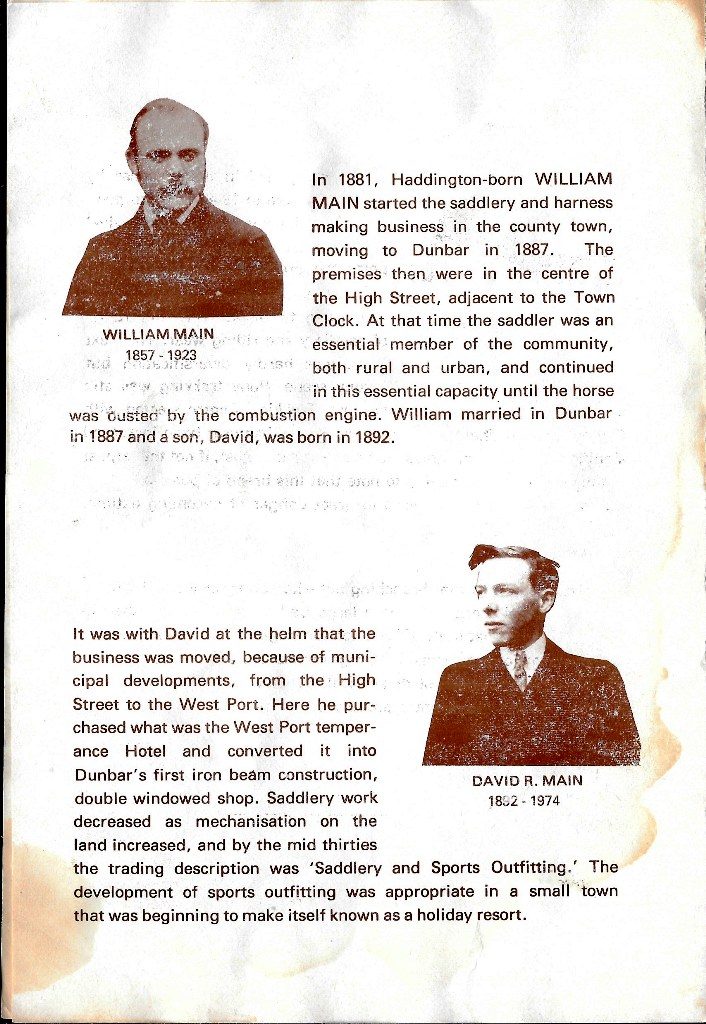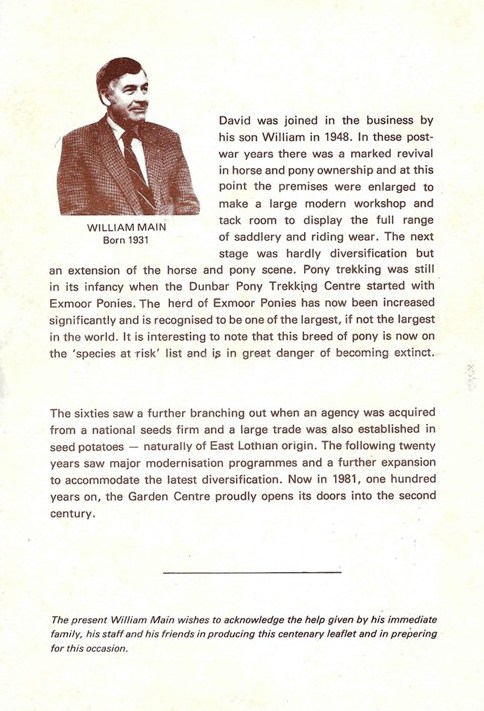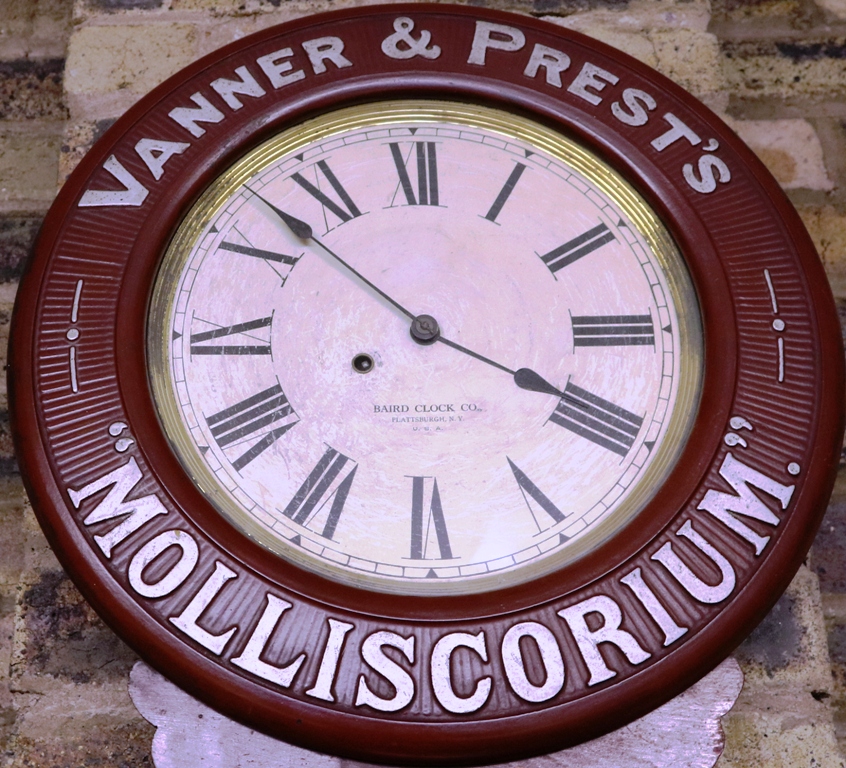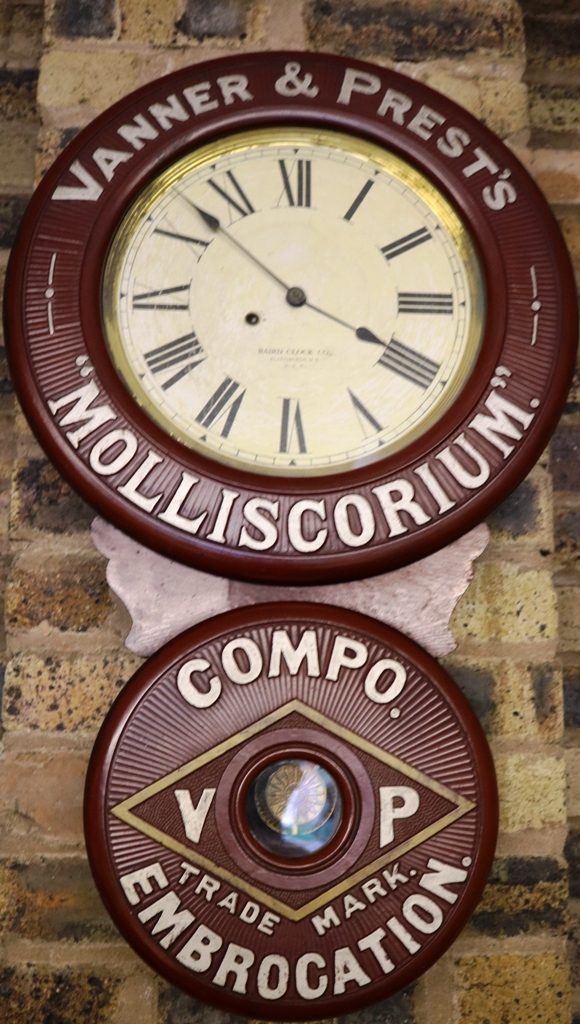This month features one shop in Dunbar – William Main & Sons – the recently closed Saddlers’ shop and cafe. The shop was situated on the West Port and the shop building, with its large windows is still there. The brochure below was donated to the Society by David Main and is published here with his permission, as are the photos of the shop’s unusual clock.

The front page of the brochure (best enlarged) which celebrates one hundred years of the shop’s existence, shows the original shop which was in the High Street, just along from the Town House, and the newer shop in the West Port on the site of the former West Port Temperance Hotel.

The second page of the brochure (best enlarged) reads “In 1881, Haddington born WILLIAM MAIN started the saddlery and harness making business in the county town, moving to Dunbar in 1887. The premises then were in the centre of the High Street, adjacent to the Town Clock. At that time, the saddler was an essential member of the community, both rural and urban, and continued in this essential capacity until the horse was ousted by the combustion engine. William married in 1887 and a son, David, was born in 1892”. The photo is of William Main 1857 – 1923. Below this, the text reads “It was with David at the helm that the business was moved, because of municipal developments, from the High Street to the West Port. Here he purchased what was the West Port Temperance Hotel and converted it into Dunbar’s first iron beam construction, double windowed shop. Saddlery work decreased as mechanisation on the land increased, and by the mid thirties, the trading description was ‘Saddlery and Sports Outfitting’. The development of sports outfitting was appropriate in a small town that was beginning to make itself known as a holiday resort”.

The third page of the brochure (best enlarged) reads “David was joined in the business by his son William in 1948. In these post-war years, there was a marked revival in horse and pony ownership and at this point, the premises were enlarged to make a large modern workshop and tack room to display the full range of saddlery and riding wear. The next stage was hardly diversification but an extension of the horse and pony scene. Pony trekking was still in its infancy when the Dunbar Pony Trekking Centre started with Exmoor ponies. The herd of Exmoor ponies has now been increased and it is recognised to be one of the largest, if the not the largest in the world. It is interesting to note that this breed of pony is now on the ‘species at risk’ list and is in great danger of becoming extinct. The sixties saw a further branching out when an agency was acquired from a national seeds firm and a large trade was also established in seed potatoes – naturally of East Lothian origin. The following twenty years saw a major modernisation programme and a further expansion to accommodate the latest diversification. Now in 1981, one hundred years on, the Garden Centre proudly opens its doors into the second century”.


The clock in Main’s shop was on the far wall of the shop but could be seen as you entered the shop. The clock was made in Plattsburgh, New York and advertises Vanner and Prest’s Molliscorum which was used to cure muscular problems in horses, and sold in bottles. The company also made harness oil.
You must be logged in to post a comment.